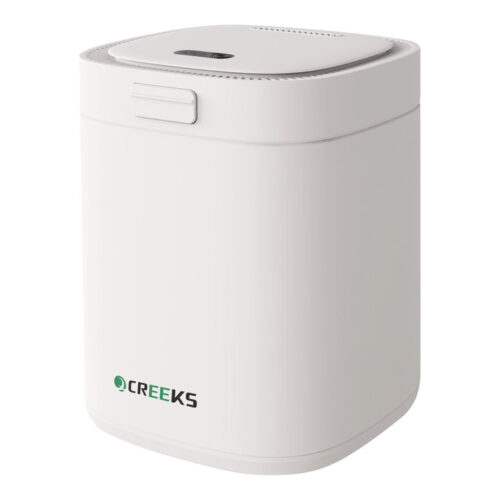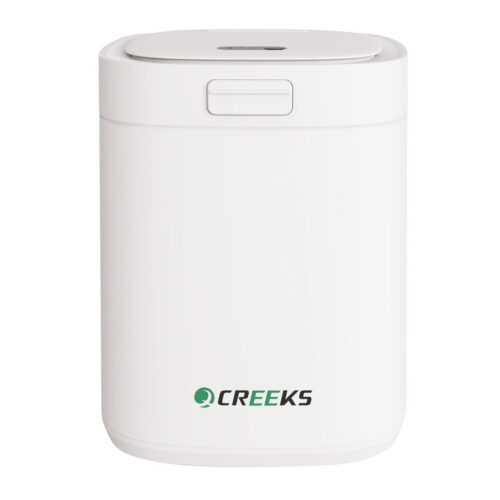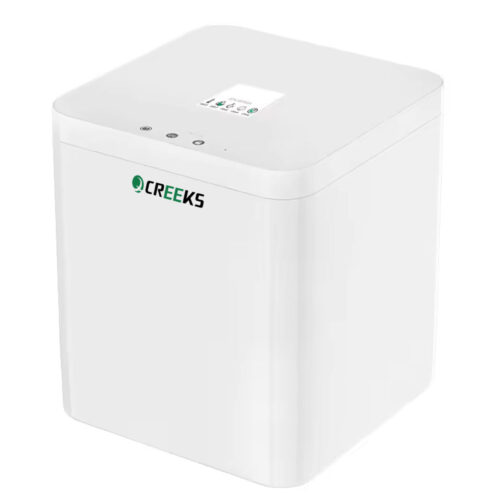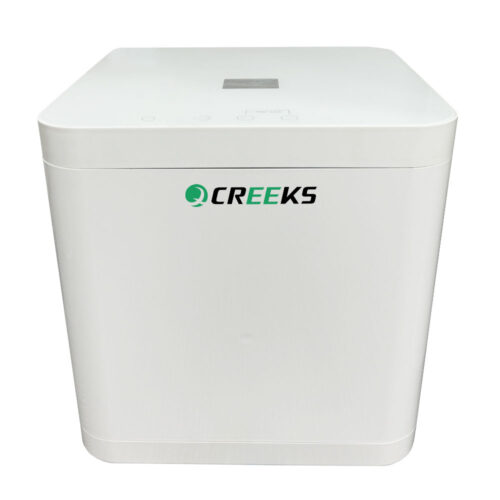Electric Composting Machines Simplify Waste Management
Composting your kitchen waste has always been a good idea. With some communities now mandating the separation of food scraps from trash, it’s also a way to stay on the right side of the law. But if you’re an apartment dweller, you might not have space for a composter or a compost pile.
Electric Composting Machines — also called food recyclers — offer a way out of this dilemma. Electric composters reduce food waste to a dry, soil-like substance you can safely put in your garden.
The amazing thing is, they do this in a matter of hours, not the months or even years it usually takes to produce compost. Plus, unlike a regular composter, an electric composting machine does its job while controlling methane gas emissions and odors.
Electric composting machines are fairly new, and performance varies from model to model. The quality of the resulting compost also varies, with only a few models producing a nutrient-rich soil amendment. Others produce nutrient-deficient, dehydrated food chips that are better as mulch than fertilizer.
All electric composting machines offer an easy way to keep food waste out of the trash, and they do so without attracting flies!
What Is an Electric Composting Machine?
An electric composting machine is a kitchen appliance. Some are small enough for countertops; others are the size of a garbage can.
Electric composting machines are innovative devices designed to simplify and accelerate the composting process. They are ideal for urban environments, small spaces, or individuals who want to reduce food waste efficiently without the hassle of traditional composting methods. These machines use heat, agitation, and sometimes additives to break down organic waste into nutrient-rich compost in a matter of hours or days, rather than weeks or months.
You use one like a regular compost pail: Open the lid, drop in the food, press a button and the composter does the rest. The composting cycle takes five to 24 hours, depending on the model. Then you retrieve the dehydrated product from a drawer at the base of the machine and spread it in the garden.
Many companies producing electric composting machines are startups in the crowdfunding stage, but there are some well-reviewed brands on the market. With prices from $400 to more than $1,000, the decision to experiment with electric composting doesn’t come cheaply.
How Do Electric Composting Machines Work?
Electric composting machines generally process food scraps in three stages.
First, the device heats the scraps to a temperature of about 160 degrees, which kills pathogens and weed seeds. Heating continues until the food is completely desiccated.
Then it’s ground up into granules.
Finally, the compost cools before you remove it from the appliance.
Some electric composting machines tumble the food waste as it’s being heated so it dries faster. Others offer separate compartments for the three stages, so you can add more scraps while the unit is already working on a batch. Still, others feature more than one composting mode to process meat and some plant-based plastics as well as vegetable matter.
Most electric composting machines pass the air released in the drying process through a carbon filter that removes atmospheric pollutants and odors. An entire cycle typically consumes about 1- to 1.5-kWh of electricity, about the same as running an electric space heater for an hour.
The quality of the compost also varies. An organic starter should be added to the food scraps to produce soil-like compost that plants can use directly; some, but not all, manufacturers supply this. Without this starter, the final product is often devoid of nutrients but still suitable as mulch or filler.
Why Get an Electric Composting Machine?
While some see an electric composting machine as unnecessary, others want one to keep food scraps out of the garbage. Alternative composting methods, including manual compost tumblers and worm composting, require daily attention and take a long time to work, especially if you keep adding new material.
The benefits of electric composting machines include:
- No Odors: It’s virtually impossible to control odors from regular composters. Electric composters are odor-free.
- Compact Design: Electric composters take up little counter or floor space. You won’t need space in the garden for a compost pile or a corner of the patio for a manual compost tumbler.
- Automatic Operation: There’s no manually spinning a tumbler or shoveling material onto a pile. Just drop in the food scraps and retrieve the compost when the cycle finishes.
- Simple to Use: It eliminates the green-to-brown ratio required for manual composting.
- Pest-Free: Electric composters don’t attract flies, rodents, and other vermin.
Before you buy, you should also weigh the drawbacks:
- Limited Testing: Electric composting is still in the development phase. Only a few products have been around long enough to attract more than a handful of user reviews.
- Increased Energy Costs: Electric composters don’t use a lot of electricity, but they do use some, and the costs can add up if you use the appliance daily.
- They do take up space: Although compact, electric composters do take up space, which can be an issue in a small kitchen.
- Capacity: Choose a machine that matches your household’s waste output.
Power Consumption: Check energy usage to ensure it aligns with your sustainability goals. - Noise Level: Some machines can be noisy during operation.
Maintenance: Regular cleaning and filter replacement may be required. - Cost: Electric composters can be expensive, so weigh the upfront cost against long-term benefits.
How To Use an Electric Composting Machine:
The specific method of using an electric composter depends on the model, but a general procedure could be summarized as:
- Insert food.
- Press the start button. Some units start automatically, and some can be operated by an app on your mobile device.
- Retrieve the compost by pulling out a drawer or tray.
The instructions for the model you buy will specify what you can compost. Most units can handle vegetative matter, coffee grounds, and even eggshells, but not all can handle meat. Also, not all models let you add more food before the end of the cycle.
Applications
- Home Use: Perfect for families or individuals looking to reduce food waste.
- Offices: Helps businesses manage cafeteria or kitchen waste sustainably.
- Schools and Institutions: Educates and promotes eco-friendly practices.
- Restaurants and Cafes: Reduces food waste and supports sustainability initiatives.
Electric composting machines are a modern solution for eco-conscious individuals and organizations looking to manage organic waste efficiently and sustainably.
HOUSEHOLD COMPOSTER
HOUSEHOLD COMPOSTER
COMPOSTER
HOUSEHOLD COMPOSTER









